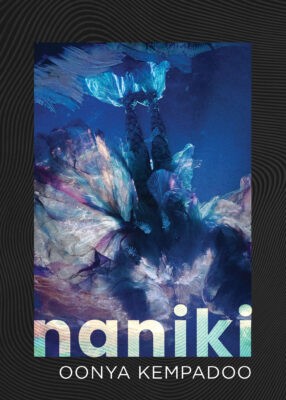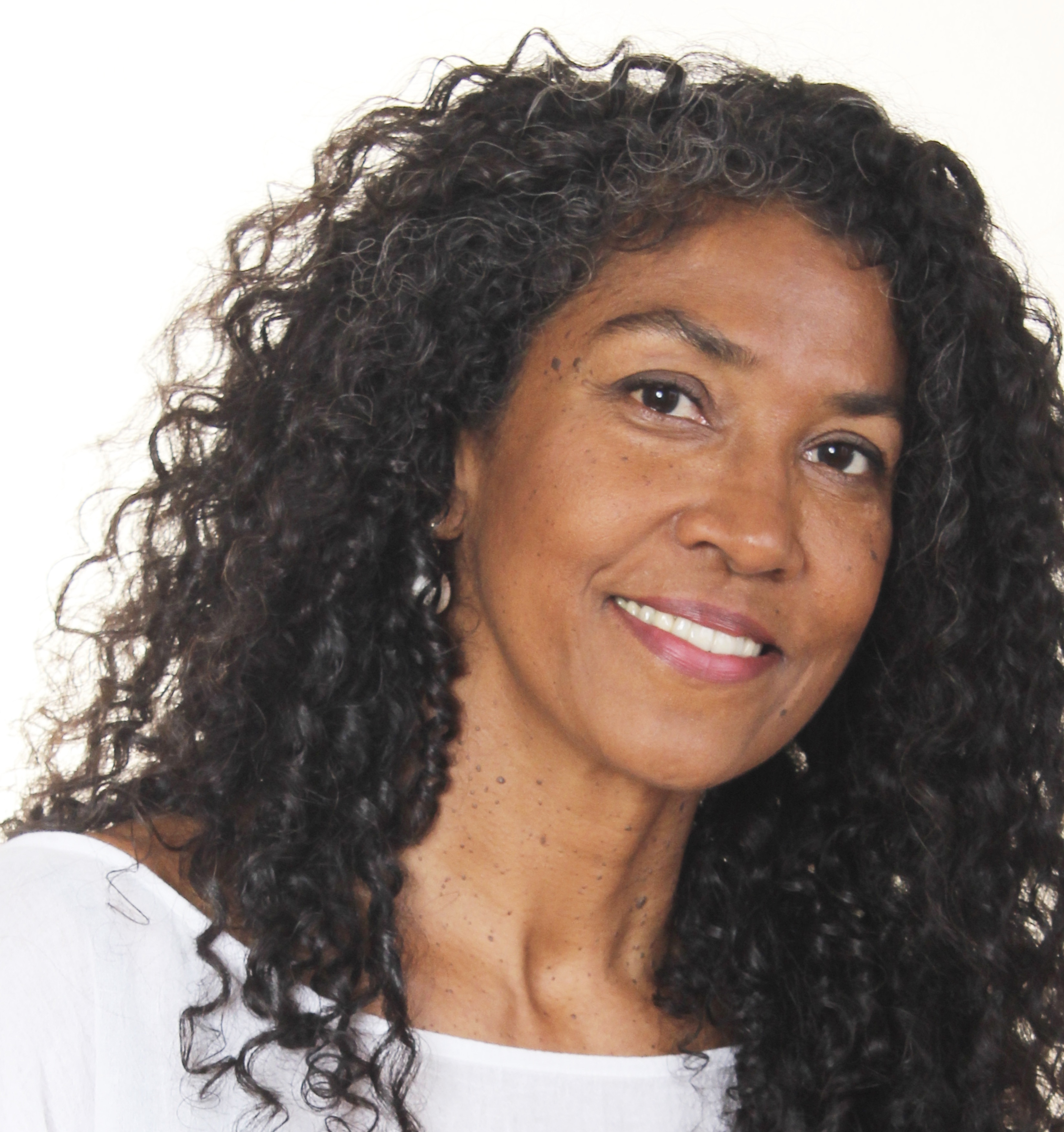Oonya Kempadoo’s recently published novel, Naniki, is a work of magic realism and Caribbean futurism. The shape-shifting co-protagonists, Amana and Skelele, elemental beings intertwined with Taíno and African ancestry, set out on an archipelagic journey with their animal avatars – their naniki – to search for the strange future seen in their dreams. When disaster strikes, they are summoned by their elders to take on a quest travelling back in time, to find the origin of the First Peoples’ knowledge.
I meet with Kempadoo for lunch on a cold but sunny afternoon in Montreal’s Mile End. The restaurant we had initially planned to go to has closed down, so we spend the first moments of our meeting wandering in and out of restaurants and cafes along Saint-Denis. Once we finally peel off all of our winter layers and sit down to order, we immediately jump into conversation.
Naniki Dundurn Press
Oonya Kempadoo
$24.99
paper
200pp
9781459751491
Kempadoo comes from a family immersed in the arts; her parents were creative in their own ways. Born in England and brought up in Guyana, she recounts details of her upbringing and her parents’ rejection of the colonial education system. “We were homeschooled up until secondary school. My mom really nurtured the arts in our curriculum and my father has written two novels, so there are a few artists in the family.” Her writing bridges generations: “My son grew up with me reading to him. When I started writing my first book, I read pieces out to him as a way of sharing bits of my childhood with him. So he’s my first listener. That’s why I dedicated [Naniki] to him and to my mom, who was my first storyteller and giver of stories.”
Having lived in some of the regions mentioned in the book, I wondered in what ways living in those different areas impacted her writing, especially going from the Caribbean to Montreal. “Moving around and being away from somewhere, but from it, allows me to see it better, and [in] that way describe it and be able to reflect that in my writing. While I was in Trinidad, I wrote about Guyana; when I was in Grenada, I wrote about Tobago,” she replies. “My movement to Montreal is connected to this story and wanting to produce it in ways other than writing.”
Naniki, Kempadoo’s fourth novel, while already a departure from her other work, is much more than a book. In fact, she didn’t see the story coming to life in book form when she started writing it almost eleven years ago. “When I found this story’s seed, it was not best as a novel. It felt like it needed to be interactive, so I started exploring that in multimedia,” Kempadoo tells me. “I would love to see it as a graphic novel or animated. That’s how I see it and that’s why [a novel] was not the first form that I tried to bring it into.” As an eco-social multimedia story project, Naniki has also been produced as an immersive experience with audiovisual components called Naniki Immersive.
Written unconventionally, the book defects from the traditional structure of a novel. Curious, I ask her why she chose this approach. “At first, I thought I wanted to write it as a YA novel because of the protagonists,” she says. “But my reaction to the fiction that I read is that there are a lot of fear-based narratives. It’s all angst-driven action and plot.”
The expectations of formulaic genre writing didn’t feel right to her. “I have a hard time consciously working that into a story for the sake of driving the plot,” Kempadoo continues. “To what end, you know? Do we really need more anxiety? Is that the only compelling thing there is to a story? Can it still be readable outside of that? It wasn’t a conscious choice of breaking the formula, I was just enjoying the writing process. That’s what I wanted to explore with it as a book, and I did.”
In its effortless fluidity, the story carries the reader gently through its pages. This sentiment is confirmed when Kempadoo shares that for her, it was like going for a swim. “That flow through water is what the characters are pulling you through. That’s what I followed. During the editing process, there was a push to make the characters more human, more emotional. But just because they lack human emotions, does that mean they’re unidentifiable? Human self-obsession is partly what I wanted to escape. It’s that imaginary place where we’re not focused on ourselves so much.” The theme of interconnection, and the idea that other beings and other forms of life are just as important as we are, underpin the story. The novel is not character-driven. The protagonists are instead our guides, like their naniki are to them, steering the reader.
On their journey, Amana and Skelele encounter the concept of race for the first time when moving across Hispaniola from the Dominican Republic to Ayiti, a nod to the colonial history between the two countries. They discuss the colonial idea that borders supposedly define ethnicities, language, and where you belong. “How we operate as humans and how we divide ourselves is what led us to this point of killing the planet. The ability to freely exchange and access that fluidity is always there, part of any ecosystem that knows no borders,” Kempadoo explains.
With a strong inclination towards the re-Indigenization of knowledge, Kempadoo expresses her hope that the West might eventually accept and acknowledge the Indigenous stories and cultures that have been around forever. Even in the Caribbean, Indigenous erasure is prevalent, and it’s assumed that its populations are only Afro-Caribbean. “Across the islands, because of the colonial curriculum, Indigenous peoples are talked about as if they no longer exist, which isn’t true at all.” For example, “many have Taíno ancestry, and when you go somewhere like Guyana, there is a significant Indigenous population.”
Kempadoo points out that “the Creolization of the Caribbean throughout its horrible history is also something that gets put into the black-and-white lens here in North America.” She felt that it was important to bring to the surface the combination of cultures that make up the Caribbean, “to acknowledge it and expand it,” using the first names of the islands and having the characters switch languages and communication styles fluidly.
When asked how the characters’ roles shifted as she wrote, Kempadoo admits that “it did end up becoming more human-based, because of the experiences that they had to overcome. It becomes more of a hero’s journey, as their role to save the natural world from humans was what they were tasked with. It wasn’t deliberate, it’s just the way the story transitioned. But that search for ontological meaning – wondering [how to] find ways to regenerate, survive, be part of this world without killing it – is the biggest question that I wanted to ask.”
A piece of speculative climate fiction, Naniki is a love letter to the Caribbean and its light-flecked waters. Despite its critical content, it is playful, refreshing, and luminous, inspiring an almost childlike curiosity and urge for exploration, while illustrating the importance of understanding our past to safeguard our future.[mRb]







Absolutely a fascinating journey into the realms of historical mysticism and contemporary realism. Bravo!